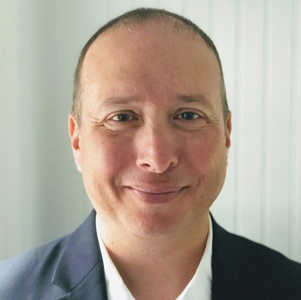Future-ready energy systems: Strategies for sustainability and efficiency
.
Tip #37
Justin Carron, Director of Buildings & Campus at Eaton
Building sustainable healthcare facilities extends beyond reducing emissions. It involves creating resilient, efficient and future-ready energy infrastructures that enhance patient care. Increasing energy demands, aging infrastructure and digitalization present unique opportunities for modernization and sustainability like never before.
Five ways to simplify your journey to sustainability and efficiency
Begin with optimization
Before making major infrastructure changes, start by optimizing how your facility uses energy. Digital technology plays a key role in achieving more efficient power usage. These digital technologies are the connected devices, data models, insights and analytics that help transform power management by providing the actionable insights needed to prioritize improvements – and they play a key role in sustainability and decarbonization.
Sensors, AI models and digital tools can help pinpoint inefficiencies in HVAC systems, lighting, and other building operations. These insights allow teams to prioritize upgrades and reduce waste, often creating savings that can be reinvested in patient care.
Energy management optimization systems (EMOS) can help manage increasingly complex healthcare energy systems—including onsite renewables, battery storage and electric vehicle (EV) charging infrastructure. Providing intelligent monitoring, controls and energy optimization, and forecasting energy usage to be better prepared for upcoming energy demand. This digital solution also provides the data needed to support 3D modeling and “digital twin” capabilities that enable healthcare facility management teams to simulate “what if” scenarios to ensure backup power schemes are effective and strategically prioritize electrical system upgrades.
Electrify with intention
If your HVAC or central utility systems are nearing end-of-life, it’s an opportunity to replace them with low-carbon, electric alternatives. Also, transitioning fleet vehicles to electric and installing EV charging infrastructure can support long-term sustainability goals. These upgrades can be part of the overall strategy to comply with evolving building codes and standards.
Modernize backup power systems
There are far more options to deliver backup power systems. In 2023, the Centers for Medicare and Medicaid Services (CMS) and the National Fire Protection Association (NFPA) issued a categorical waiver for health care microgrid systems (HCMSs) that opened the door to use diverse distributed energy resources (DERs) to fulfill backup power requirements. Today, you can use energy storage, cogeneration, renewables, and fuel cells to support emergency power needs. These systems offer scalability, resilience, and the potential for long-term cost savings.
Design for flexibility and growth
Healthcare facilities change over time, and your energy systems should too. Modular designs and scalable infrastructure allow for future expansion without major interruptions. Oversizing circuit protection and planning for future DER integration can help facilities adapt to changing needs and technologies.
Invest in training and team readiness
Technology isn’t the only factor in energy efficiency. Facility teams need the knowledge and tools to operate and maintain increasingly complex systems. Investing in training ensures your staff can respond quickly during emergencies and keep systems running smoothly.
Sustainability in healthcare is a journey, not just a destination. By embracing digitalization, electrification, and resilient design, healthcare providers can build facilities that are not only greener—but smarter, safer, and better equipped to serve their communities and the future.
Author
 Justin Carron, Director of Buildings & Campus for Eaton’s Electrical Sector
Justin Carron, Director of Buildings & Campus for Eaton’s Electrical Sector
Justin Carron currently serves as the Director of Buildings & Campus for Eaton’s Electrical sector. He has over twenty years of experience in mission critical segments such as healthcare, data centers, universities, and life sciences.
Justin leads Eaton’s partnerships with both the American Society of Healthcare Engineers (ASHE) and the International District Energy Association (IDEA) to help educate the industry on areas such as safety, reliability, energy management, electrification, and decarbonization. He has authored numerous white papers and actively speaks at major industry events and technical conferences.
Justin holds a Bachelor of Science degree in Finance from the University of Rhode Island along with a Global Executive MBA in Economics from the University of Manchester’s Alliance Manchester Business School.

